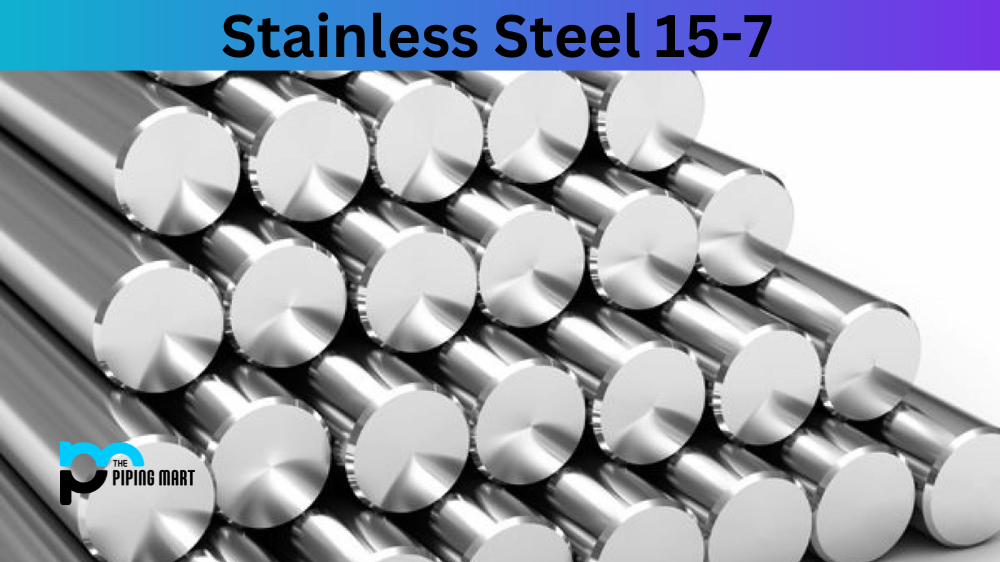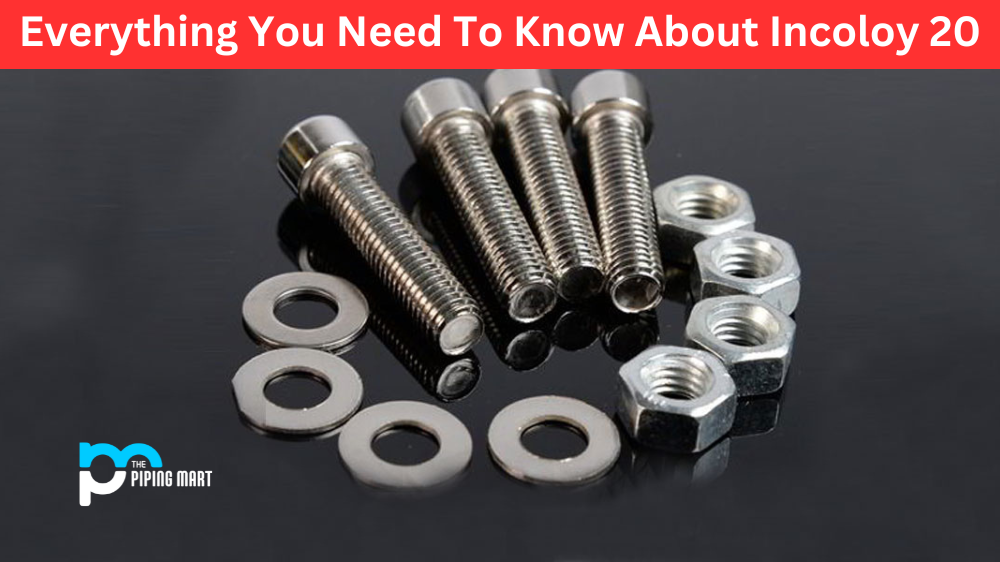This blog post will examine the composition, mechanical and physical properties, uses, corrosion resistance, heat treatment, machining, and stainless steel welding 15-7.
What is Stainless Steel 15-7 PH?
Stainless steel 15-7 may be one of the lesser-known steel alloys, but it’s widely used in various industrial applications. Stainless steel 15-7 is a precipitation-hardening steel that contains chromium, nickel, and aluminium.
Stainless Steel 15-7 PH Composition
Stainless steel 15-7 PH is composed of 15% chromium, 7% nickel, and 1.5% aluminium. It also contains small amounts of carbon, manganese, phosphorus, sulfur, and silicon. The aluminium in 15-7 steel strengthens the alloy, while the chromium and nickel enhance its corrosion resistance.
| Element | Content (%) |
|---|---|
| Iron, Fe | 74.9 |
| Chromium, Cr | 15 |
| Nickel, Ni | 7 |
| Molybdenum, Mo | 2 |
| Aluminum, Al | 1.1 |
Stainless Steel 15-7 PH Mechanical Properties
Stainless steel 15-7 PH has excellent mechanical properties, including high strength, toughness, and fatigue resistance. It has a tensile strength of 200,000 psi, a yield strength of 170,000 psi, and a high elongation of 8-12% in the annealed condition. It also demonstrates good corrosion resistance in the hardened state.
| Properties | Metric | Imperial |
|---|---|---|
| Tensile strength | 900 MPa | 131000 psi |
| Yield strength (@ strain 0.200%) | 380 MPa | 55100 psi |
| Elastic modulus | 190-210 GPa | 27557-30458 ksi |
| Poisson’s ratio | 0.27-0.30 | 0.27-0.30 |
| Elongation at break | 30% | 30% |
| Hardness, Rockwell B (converted from Brinell hardness) | 88 | 88 |
Stainless Steel 15-7 PH Physical Properties
Stainless steel 15-7 PH has a density of 0.28 lb/in3 and a melting point of 2670°F. It has a thermal conductivity of 8.9 BTU/hr•ft•°F and a specific heat capacity of 0.11 BTU/lb•°F.
| Properties | Metric | Imperial |
|---|---|---|
| Density | 7.81 g/cm3 | 0.282 lb/in³ |
Stainless Steel 15-7 PH Equivalent
- AMS 5520
- AMS 5657
- ASTM A564 (632)
- ASTM A579 (632)
- ASTM A693 (632)
- ASTM A705 (632)
- DIN 1.4532
- DIN 1.4574
- MIL S-8955
- AMS 5812
- AMS 5813
Stainless Steel 15-7 PH Uses
Stainless steel 15-7 PH is used in various applications, including springs, washers, torsion bars, lock washers, bearings, and clips. Its high strength and toughness make it an ideal material for components subjected to increased stress, fatigue, and impact.
Stainless Steel 15-7 PH Corrosion Resistance
Stainless steel 15-7 PH exhibits excellent corrosion resistance in various conditions. Its high chromium content resists oxidation and general corrosion, while the nickel enhances its resistance to chloride pitting and crevice corrosion. However, stainless steel 15-7 PH may undergo stress corrosion cracking under certain conditions, so proper precautions must be taken to prevent it.
Stainless Steel 15-7 Heat Treatment
Stainless steel 15-7 PH can be hardened by heat treatment. The alloy is first solution annealed at 1975°F for 1 hour, followed by air or furnace cooling. It is then aged at 900°F for 1 hour to achieve maximum strength. Stainless steel 15-7 PH can also be hardened by cold working, but care must be taken to avoid stress corrosion cracking.
Stainless Steel 15-7 Machining
Stainless steel 15-7 PH is a tough alloy that can be difficult to machine. High-speed steel tools are recommended for cutting operations, and low feed rates and light cuts are advised to reduce the risk of work hardening. Lubrication is also critical to prevent galling and wear.
Stainless Steel 15-7 Welding
Stainless steel 15-7 PH is weldable using conventional welding methods, but the alloy is prone to cracking due to its high aluminium content. Preheating, slow cooling, and post-weld heat treatment can help reduce the risk of cracking.
Conclusion
Stainless steel 15-7 PH is a versatile, high-performance alloy with excellent strength, toughness, and corrosion resistance. Its unique composition and properties make it a go-to material for springs, washers, bearings, and other components subjected to high stress and fatigue. However, proper precautions must be taken when working with stainless steel 15-7 to avoid cracking, galling, and other issues. You can make informed decisions about incorporating this alloy into your next project by understanding the composition, mechanical and physical properties, uses, corrosion resistance, heat treatment, machining, and stainless steel welding 15-7 PH.

Abhishek is a seasoned blogger and industry expert, sharing his insights and knowledge on various topics. With his research, Abhishek offers valuable insights and tips for professionals and enthusiasts. Follow him for expert advice on the latest trends and developments in the metal industry.




